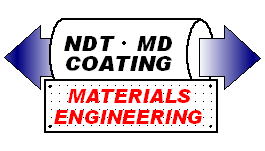◆ Environmentally-assisted fracture problem
・Hydrogen embrittlement
・Fracture at elevated temprature
The growing needs for energy efficient operation of modern gas turbines has boosted the use of sophisticated metallic materials (so-called superalloys) for blades attached to rotators. Since blades are subjected to an extremely high temperature environment, the evaluation of their life with a correct knowledge of crack growth mechanism has been an engineering issue.
Our original site-specific observation technique successfully unveiled
the microscopic features at the crack tip region in a single-crystalline
nickel-based superalloy. It was found that the formation of twin bands
triggered the precipitation of elements, resulting in degradation and cracking
along the bands.
For more detail, see:
Y. Takahashi, D. Kobayashi, S. Fujii, M. Takuma, K. Saitoh, T. Sato, Time-dependent crack growth mechanism in Ni-based single crystal superalloys at high-temperature, Materials Science & Engineering A, Vol. 859, 2022, 144179
(https://doi.org/10.1016/j.msea.2022.144179)
Related study:
Y. Takahashi, D. Kobayashi, M. Kashihara, T. Kozawa, S. Arai, Electron-microscopic
analyses on high-temperature fatigue crack growth mechanism in a Ni-based
single crystal superalloy, Materials Science & Engineering A, Vol.
793, 2020, 139821 (https://doi.org/10.1016/j.msea.2020.139821)











